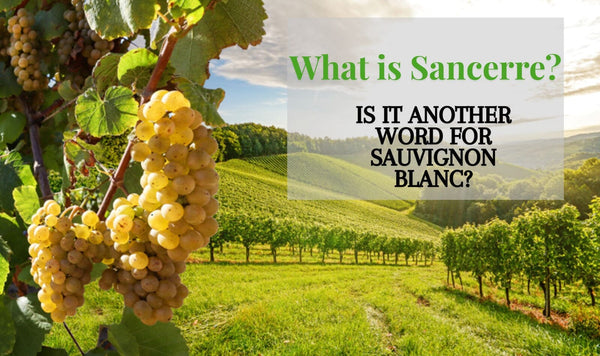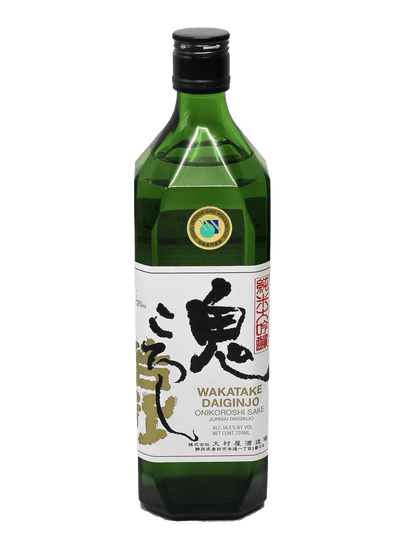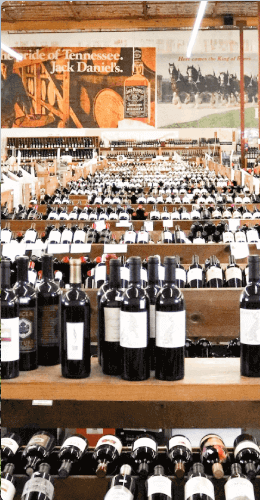What is Sancerre? Is It Another Word for Sauvignon Blanc?

Not quite.
While often grouped together, comparing Sancerre with Sauvignon Blanc isn’t really fair. That’s because Sancerre is Sauvignon Blanc, at least when it comes to white wines. In fact, it offers a terroir-driven expression found only in this part of the Loire Valley. When someone searches for a crisp Sauvignon Blanc, chances are they’re looking for Sancerre, even if they don’t yet know it.
Discovering Sancerre: The Loire Valley’s Icon of Crisp Sauvignon Blanc
Sitting on the left bank of the river opposite Pouilly-Fumé amidst the rolling hills of France’s Loire Valley lies the picturesque village of Sancerre. This historic region, known today for its elegant French Sauvignon Blanc, boasts a winemaking tradition dating back to the 12th century. Over the past 50 years, Sancerre has become a benchmark for crisp, mineral-driven whites—particularly among those seeking the best Sancerre wine online or in-store.
A Terroir That Defines the Style
Sancerre’s landscape reveals three dominant soil types: First, terres blanches (chalky marl with fossilized shells). Wines from these vineyards tend to be fuller-bodied and age-worthy. Second, Caillottes (hard, stony limestone). These produce lively, fruit-forward wines ideal for early drinking. Finally, silex (flinty clay). Wines from silex soils produce intense mineral and smoky aromas in the wine, sometimes described as tasting of gunflint or even wet stone.
Such soil differences contribute to a remarkable range of styles within the Sancerre appellation. While many bottles are blends of multiple sites, top producers craft single-vineyard cuvées that express the nuances of specific lieux-dits.
From Medieval Roots to Modern Recognition
Although the region was once known for red wines made from Pinot Noir and Gamay, the devastation caused by phylloxera in the late 19th century led local winegrowers to replant with Sauvignon Blanc vines. The variety’s adaptability and vigor suited the area's limestone-rich soils and steep slopes. By 1936, Sancerre blanc earned official AOC status.
Today, about 80% of the region’s output comes from Sauvignon Blanc. With roughly 2,400 hectares under vine, most planted to white wine grapes, the region’s wines are renowned for their precision, freshness, and minerality. This makes it an ideal region for those shopping to buy Sauvignon Blanc wine online or seeking high-quality white wine boasting a distinct sense of place.
The Character of Sancerre Sauvignon Blanc
If you're looking for a crisp Sauvignon Blanc, Sancerre delivers this perfectly. Expect aromas of citrus zest, green apple, white peach, and possibly fresh-cut herbs. Cooler vintages may lean toward grassy and vegetal notes (think nettles or gooseberry); warmer years bring riper fruit aromas, tropical hints, and honeyed tones.
Unlike oaked New World versions, most Sancerre whites are vinified in stainless steel to preserve freshness and aromatics. However, a growing number of domaines, like Alphonse Mellot and Vincent Pinard at the best online wine store, experiment with subtle oak for texture and complexity in their top cuvées.
While some Sancerre wines undergo short skin contact or age on lees to enhance mouthfeel, few go through malolactic fermentation. This preserves the zesty acidity that defines the style.
Also Read: The Role of Acidity in Wine
What is the Sancerre Wine Price?
You’ll find a wide range in Sancerre wine prices. Entry-level bottles, perfect for everyday enjoyment, often start around $25. These offer classic Loire expression with fresh acidity and orchard fruit. Premium single-vineyard expressions or age-worthy wines can command $40–$70 or more, especially from top producers and exceptional vintages. Consider the 2023 Domaine Sylvain Bailly Sancerre Terroirs or the 2022 Francois Crochet Sancerre Le Petit Chemarin, for example.
Whether you're buying Sancerre wine online or at your local retailer, the price-to-quality ratio remains strong compared to white Burgundy or premium New Zealand Sauvignon Blanc.
Food Pairing with Sancerre
What grows together often goes together, and Sancerre is no exception. The region’s iconic goat cheese, Crottin de Chavignol, is perhaps the most famous food pairing with Sancerre. The wine’s citrus-laced acidity cuts perfectly through the cheese’s creamy texture and tang.

Beyond cheese, Sancerre wine with seafood is a time-tested pairing. Try it with oysters, scallops, grilled trout, or salmon with a lemon-butter sauce. Shellfish and Loire river fish, like pike, eel, or carp, also shine alongside Sancerre. The region’s flinty whites complement briny, salty dishes, while fuller-bodied styles handle richer preparations like butter-poached lobster or even roast chicken.

Not Just White: Reds and Rosés
Although lesser known, Sancerre’s Pinot Noir wines, both red and rosé, offer charm and freshness. The reds are pale in color but aromatic, with cherry, violet, and spice notes. Typically unoaked, they echo the lightness of Beaujolais but with more structure and minerality.
Sancerre rosés, also made from Pinot Noir, are pale and dry, with peach, apricot, and herbaceous notes. They pair beautifully with charcuterie, grilled vegetables, and summer salads.
Sancerre Keeps its Relevance
As Sauvignon Blanc continues to flourish globally, it’s easy to overlook its spiritual home. But if you’re after a wine that balances freshness, minerality, and a sense of place, French Sauvignon Blancfrom Sancerre remains unmatched. The region’s commitment to terroir, its patchwork of small holdings, and its traditional winemaking methods all contribute to its enduring appeal.
At Bottle Barn, we carry a handpicked selection of the best Sancerre wine to suit every taste and budget. Whether you're new to the region or a seasoned Loire Valley enthusiast, Sancerre offers one of the most compelling and refreshing white wine experiences in the world.
Related Blogs:


















Leave a comment